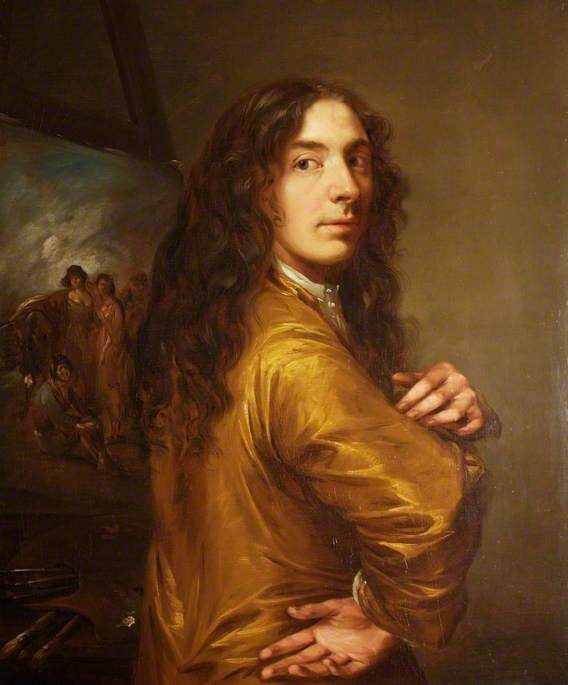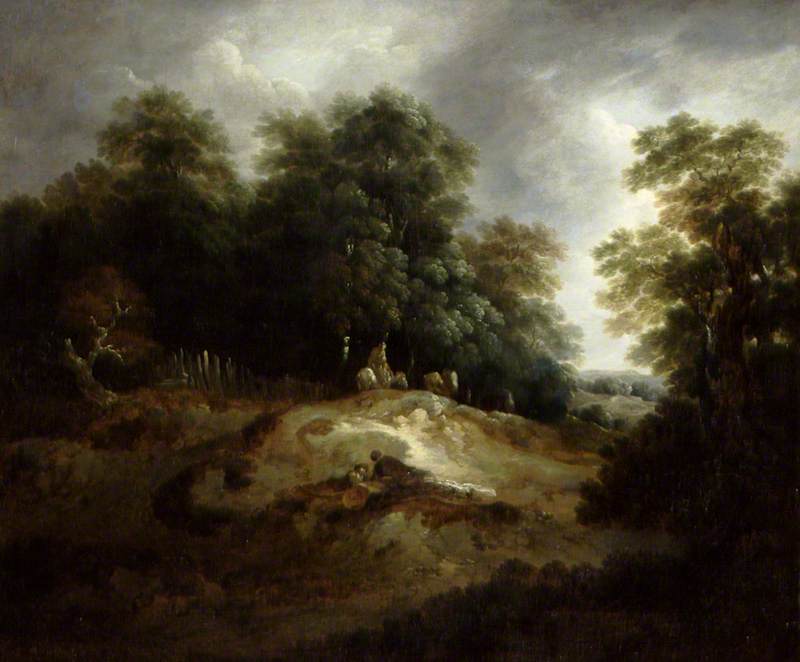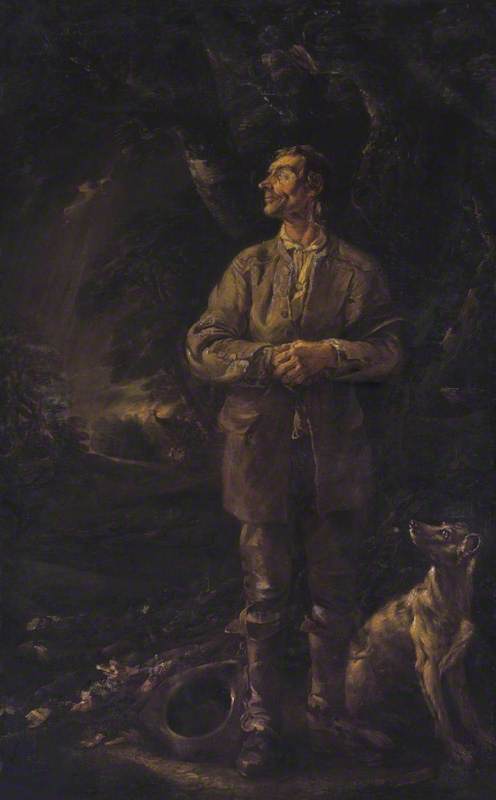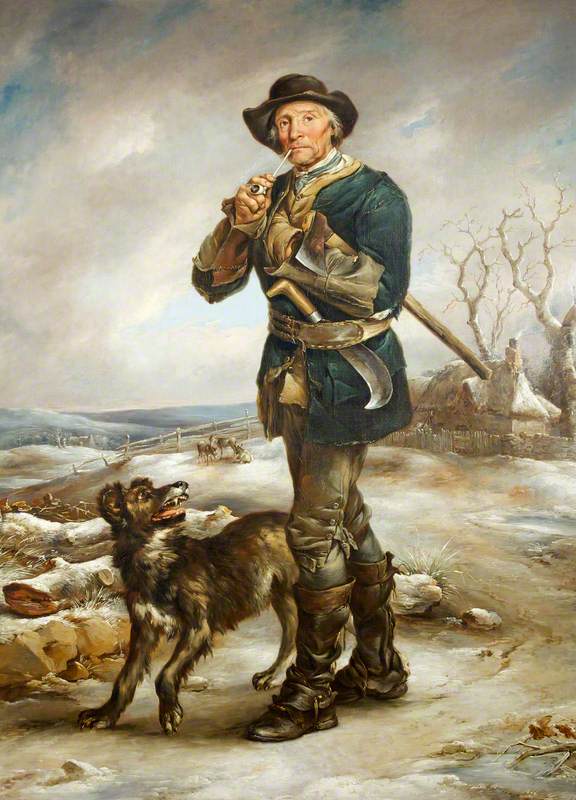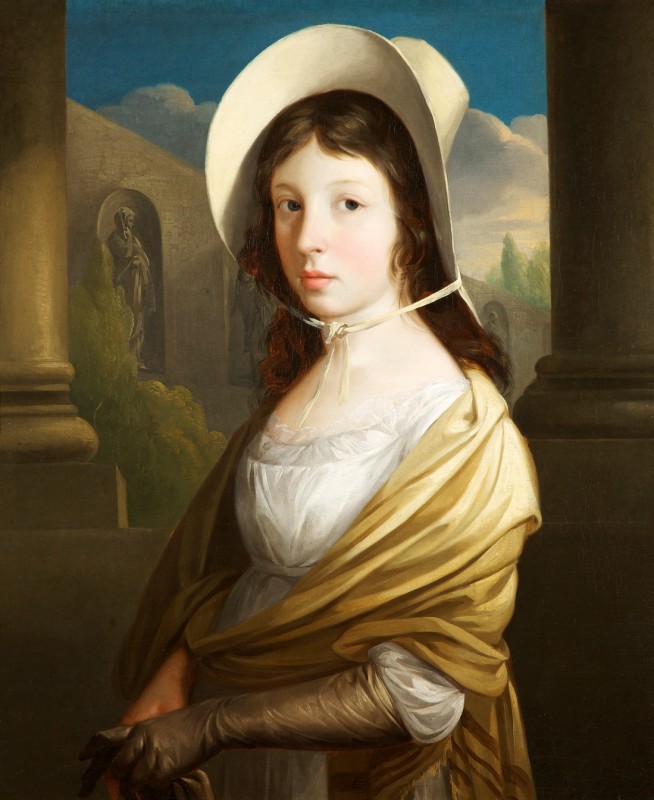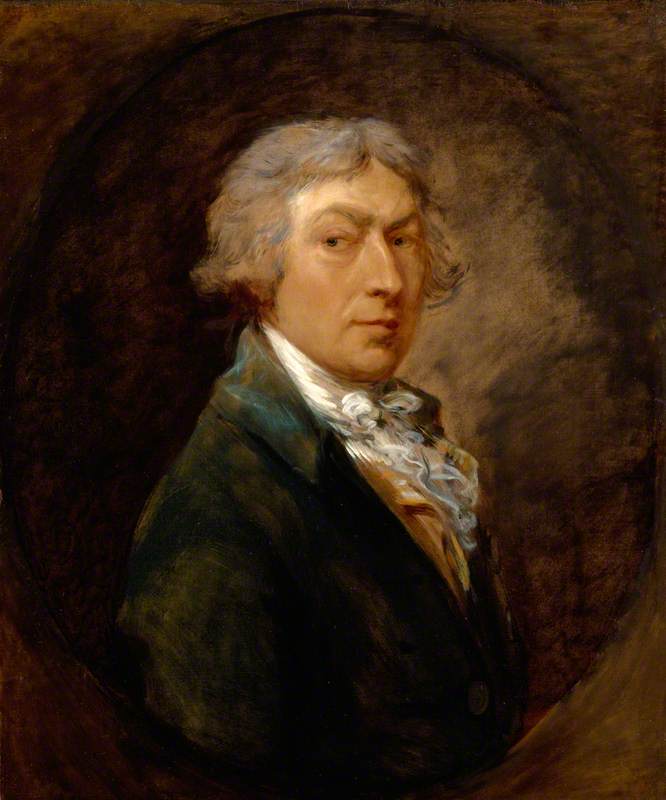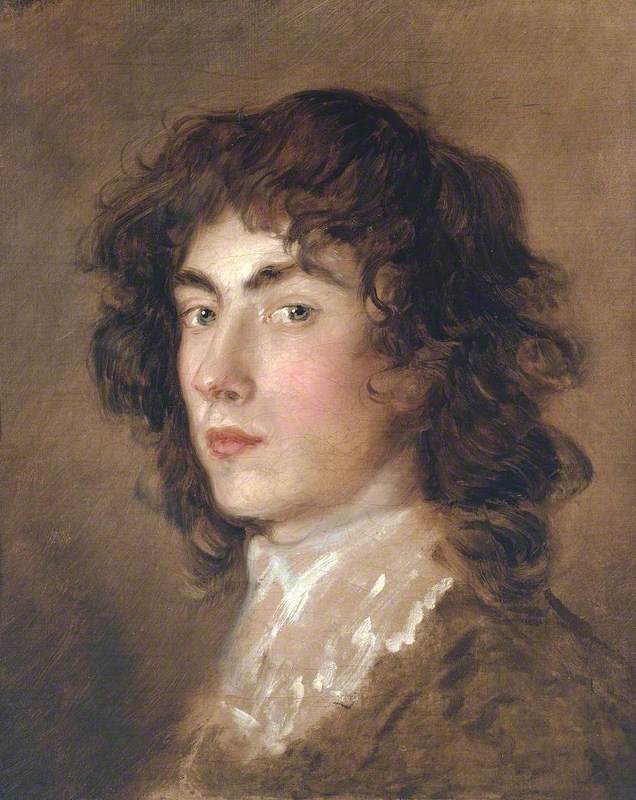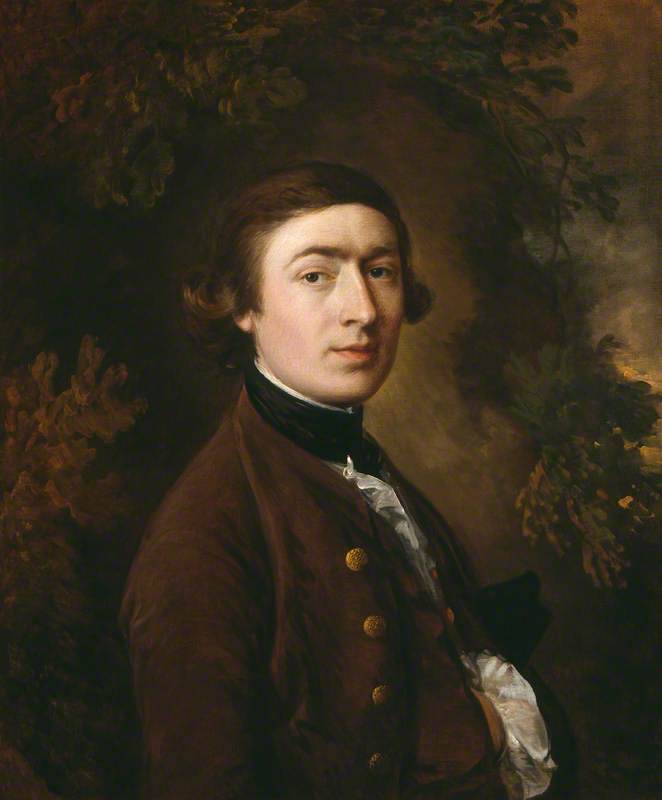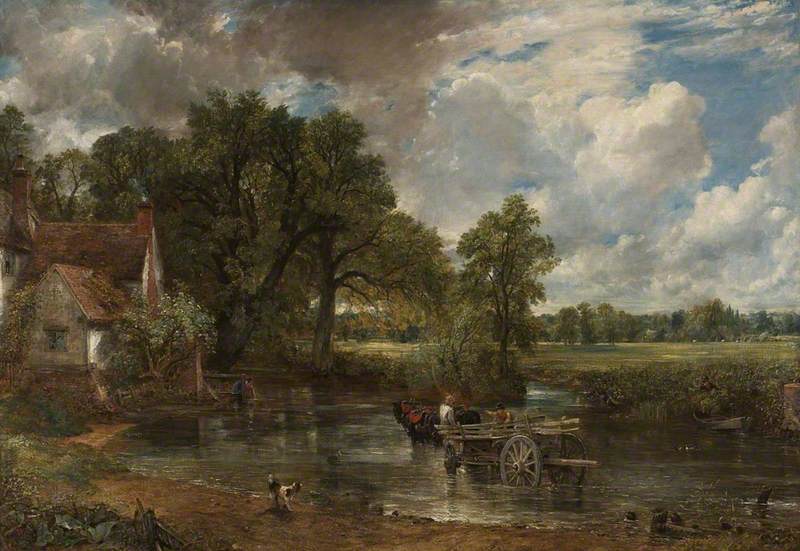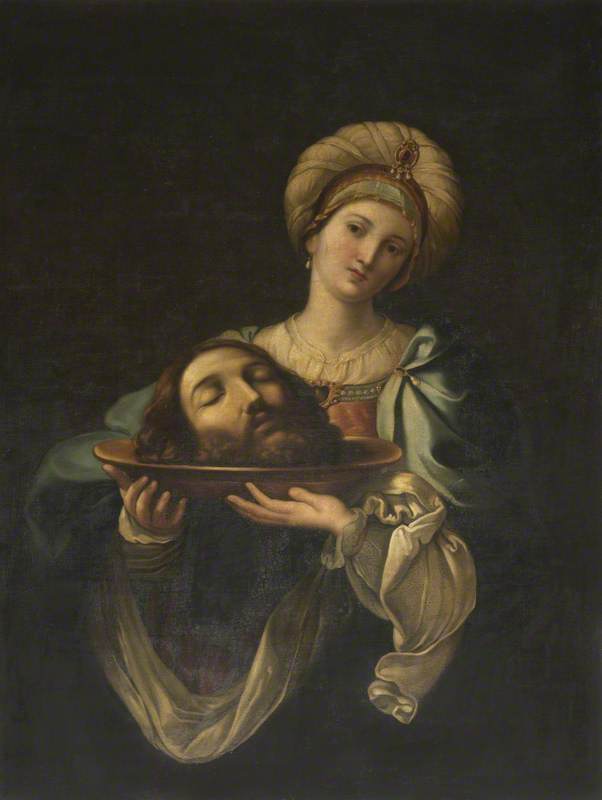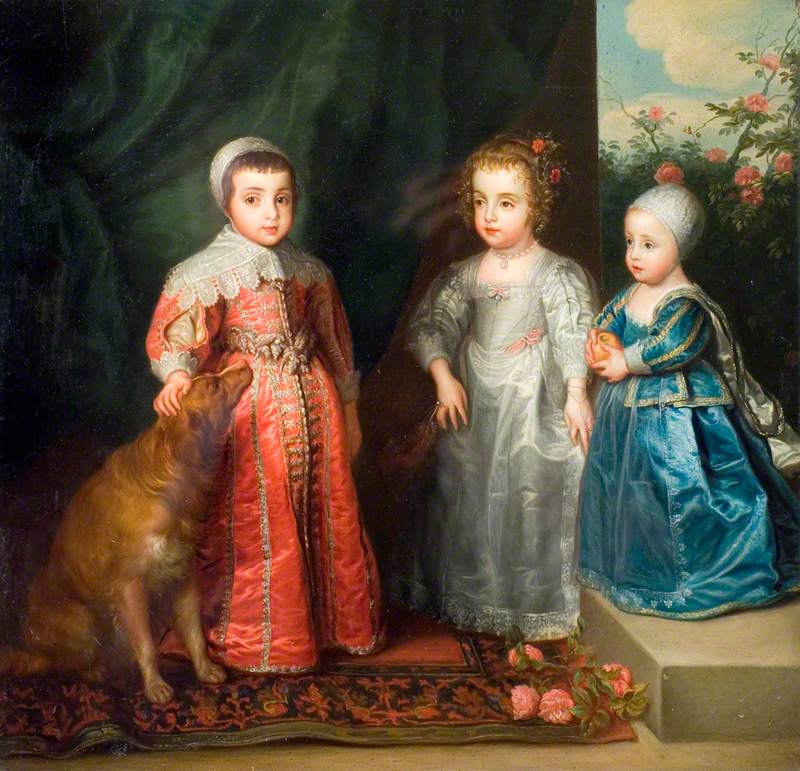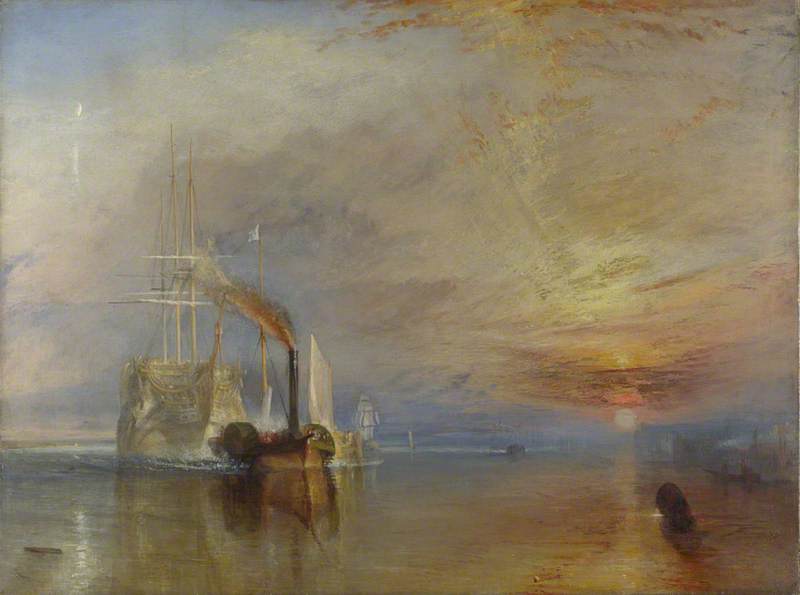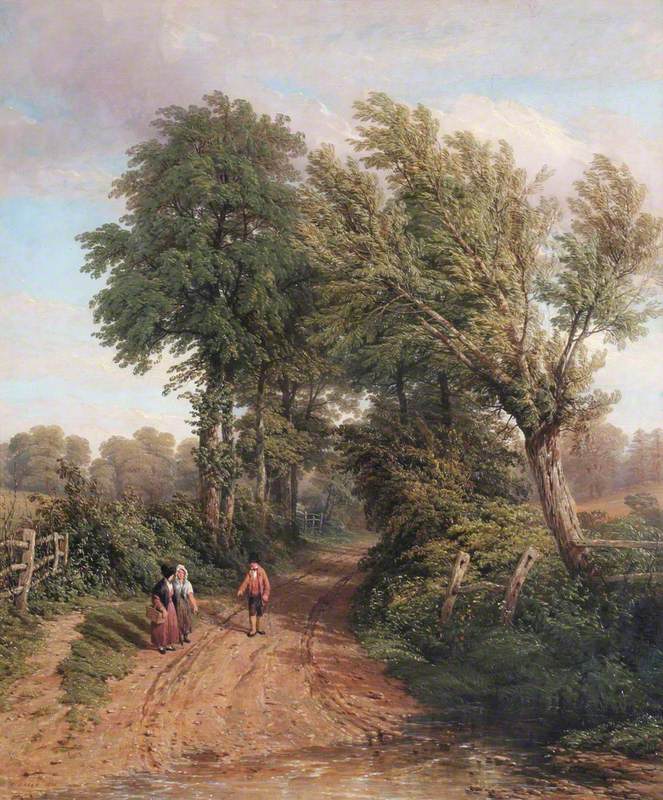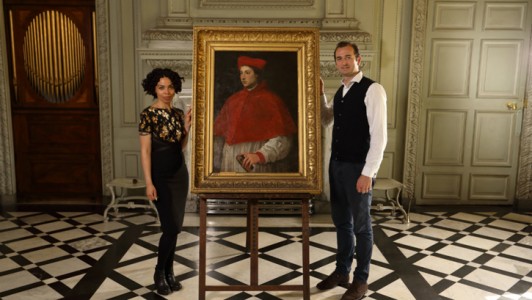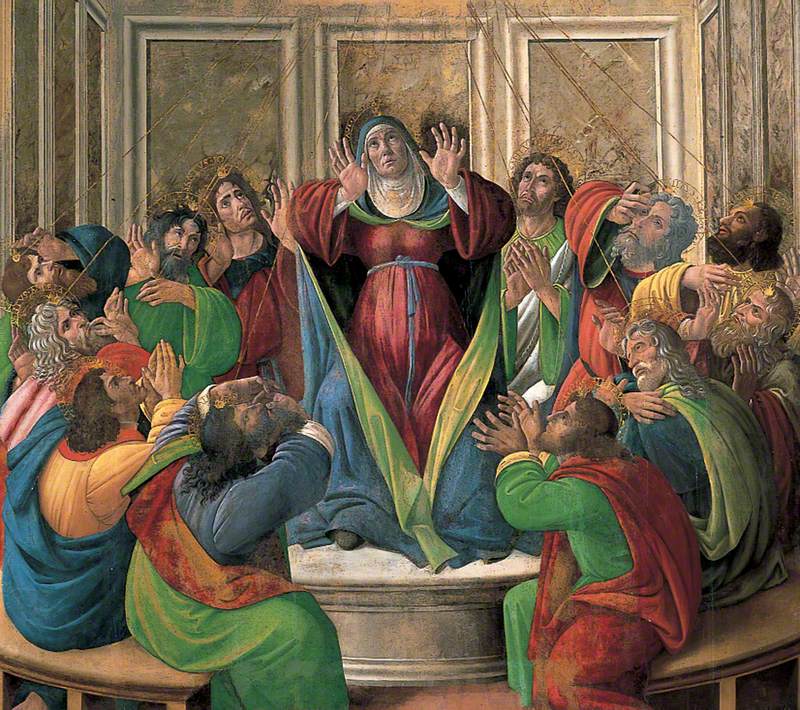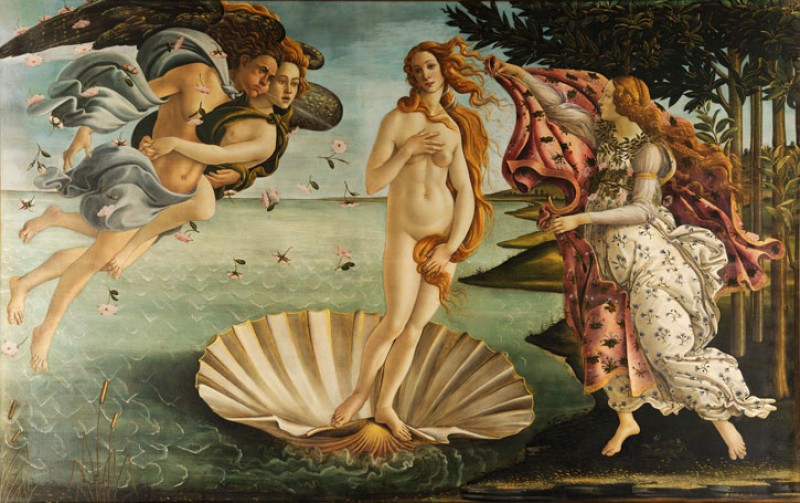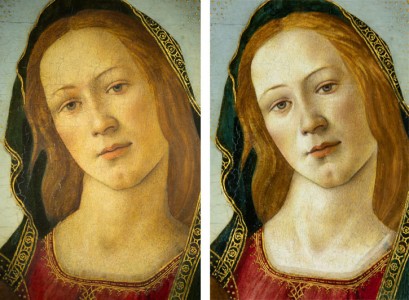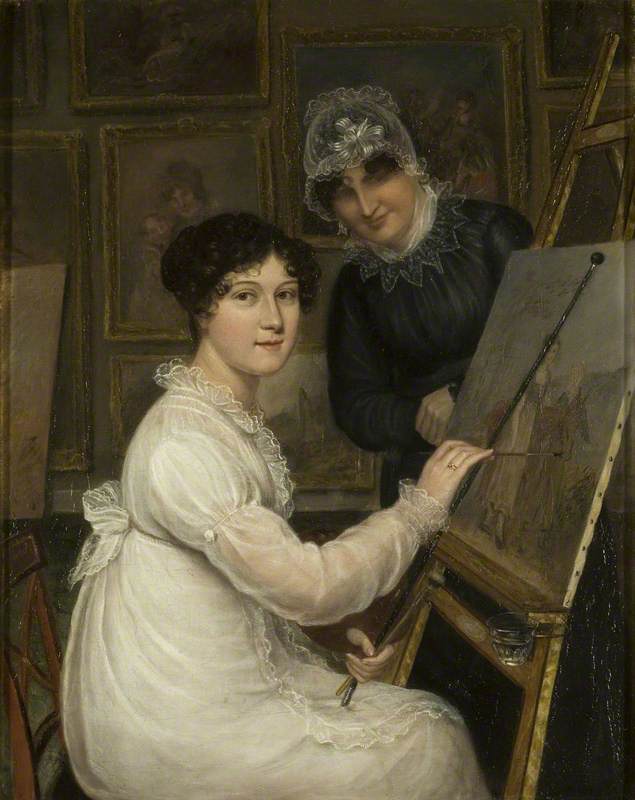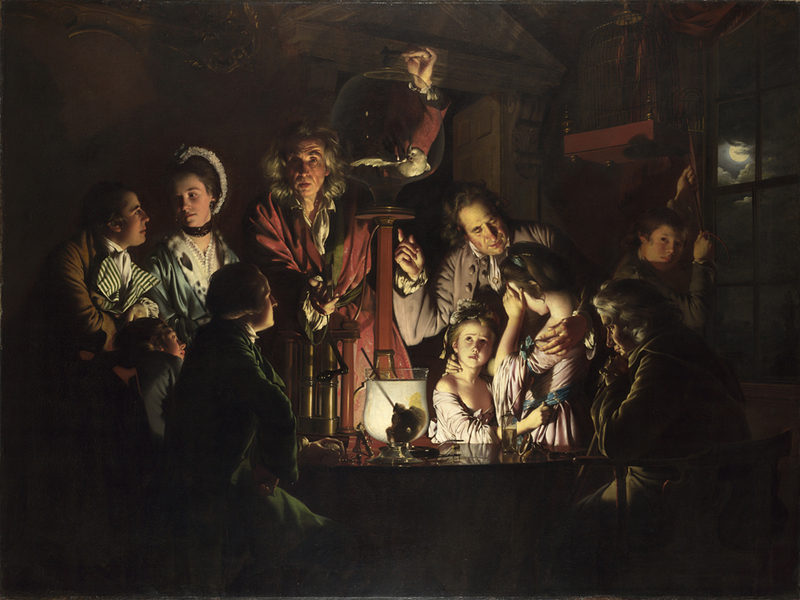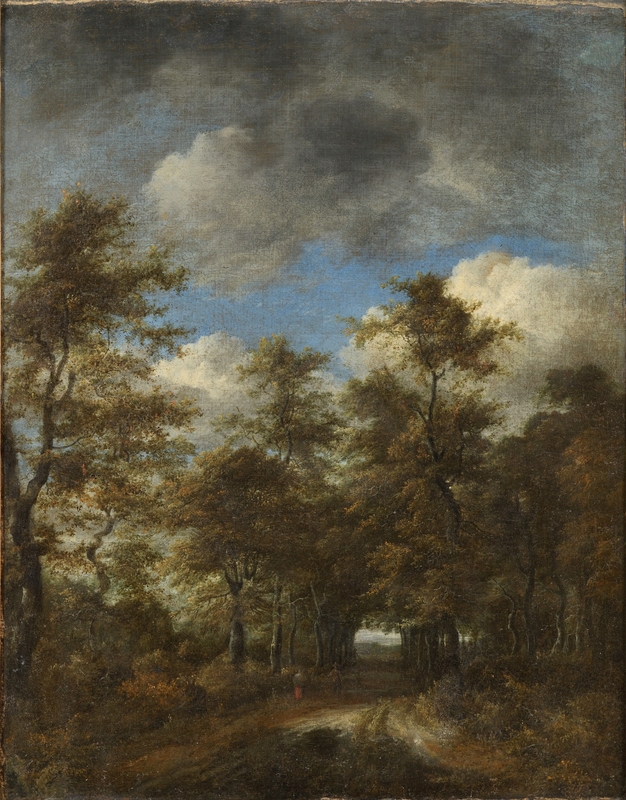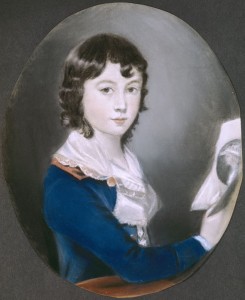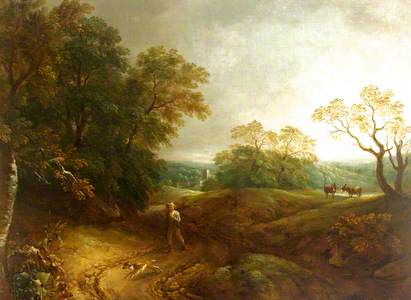Thomas Barker (1769–1847) was born at Trosnant in Monmouthshire, the eldest son of a failed barrister named Benjamin who painted horses with limited success and eventually worked at Allgood's factory painting japanned household goods. Two of his brothers, Benjamin and Joseph, were also painters, as were his sons, Thomas Jones and John Joseph. Thomas, however, remained the most talented member of the family.
Under straitened circumstances, at the age of 13, he moved to Bristol with his family, and three years later he moved again to Bath. His abilities were spotted by Charles Spackman (1749–1822), a coach-builder in the city who was keen to profit from the young Thomas's potential. Spackman took the young artist under his wing and something of his controlling nature can be deduced from Barker's double portrait of the two men.
Thomas Barker and His Preceptor Charles Spackman
1789
Thomas Barker (1769–1847) 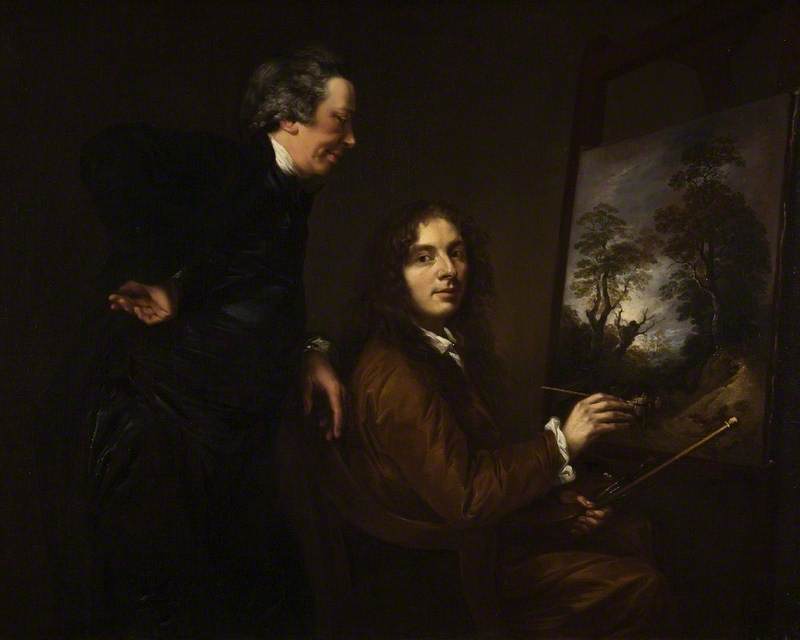
Barker began by honing his skills copying Old Masters and then moved on to paint a number of skilful pastiches based on the landscape paintings of Thomas Gainsborough. Among the many paintings Gainsborough had left in Bath was a Landscape with a Woodman owned by Dr Rice Charleton, a distinguished physician in the city, and Barker used it as a basis for a painting now in Pontypool Museum.
Gainsborough's subject matter inspired other compositions that include tired peasants riding old nags through sandy landscapes – though they replaced the certainty and resolve of the older artist's compositions with unsatisfactory decorative compromise. Unsurprisingly, many of Barker's early landscapes have been misattributed to Gainsborough – one of Barker's most successful, now in Southampton City Art Gallery, was long attributed to the Suffolk painter.
Apart from his landscapes, Barker based other canvases on Gainsborough's so-called 'fancy pictures'.
He especially admired Gainsborough's The Woodsman of 1787, using it as the model for his figure in The Woodman and his Dog in a Storm, and another of an old woodman, The Woodman and His Dog of c.1790, was a successful variant.
Thomas Macklin paid £300 for it and included it in his Poets' Gallery in London. He also bought permission to reproduce the painting for an additional £350 and Francesco Bartolozzi published a stipple print of the painting in 1792.
In 1790, just before he travelled to Italy at Spackman's expense, Barker exhibited a group of paintings in Bath with some success. He sold several to local grandees including a Mr Rogers from Southampton who, according to Sir Edward Harrington, was 'a great connoisseur, and has a fine collection of pictures, purchased two of them, for which I heard him say he gave £300! And he declared he would not exchange them for any two modern paintings in England.'
Shortly after, Barker sailed to Leghorn (Livorno) with the engraver John Hibbert. They travelled on to Florence where Barker copied paintings in the Uffizi. Using a coach supplied by his protector, the two friends then journeyed south to Rome, visiting Naples and Paestum in 1792. The British Museum has a pair of sketchbooks recording their trip and a landscape with bandits dated 1793, now in Bristol Museum & Art Gallery, is amongst his most successful works.
Cavern Scene near Subiaco, with Figures
1793
Thomas Barker (1769–1847) 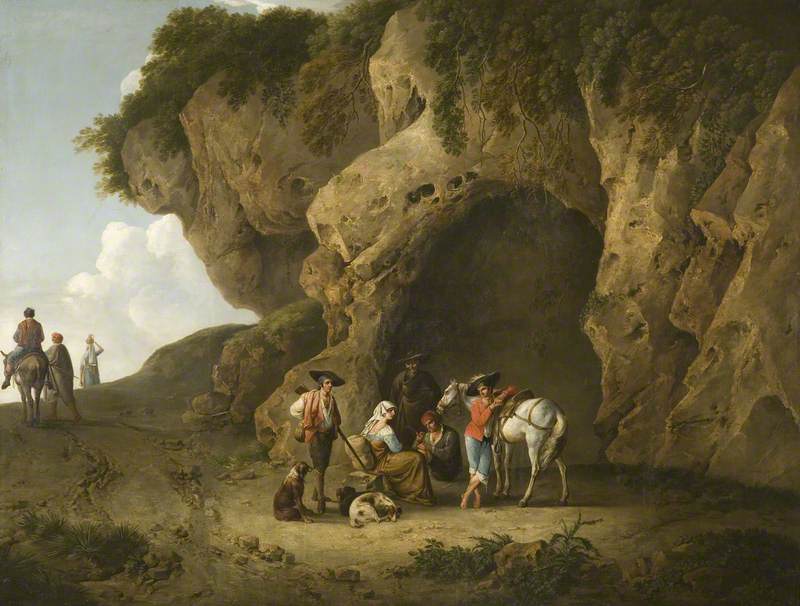
Spackman's business was under pressure and Barker and Hibbert were forced to return home in December 1793. The older man's financial troubles continued to mount and he was declared bankrupt in February 1796. The two men parted company, and Barker's paintings were returned to him. On 9th May 1796 he offered for sale, 'a valuable collection of pictures, comprising the original and principal works of that celebrated artist [and] likewise some Capital Pictures of the Old Masters' at Mr Plura's auction in Bath. In the same year, he had a further exhibition of paintings that, according to the Bath Chronicle, was admired by the Duke and Duchess of York.
Barker's father had died while he was in Italy and he briefly moved to London to build on the success of the 1790 exhibition. He continued to submit pictures to both the Royal Academy and the British Institution but his sojourn in the capital was short-lived and he had returned to Bath by 1800.
In 1803 he married Priscilla Jones and constructed a purpose-built gallery from which he could sell his work. The gallery opened in 1805 and the initial exhibitions proved popular. Thomas tried to build on this success by arranging additional displays with the work of his brothers, and he frequently sent examples of his work to exhibitions in northern industrial cities, Bristol and the capital – with intermittent success. His own marketing skills were clearly inferior to those of Spackman.
In 1818 Joseph Michael Gandy, a pupil of Sir John Soane, rebuilt Barker's house on Sion Hill in a Greek revival style to house his growing family and aggrandise his exhibition space. His paintings declined in quality and popularity and in 1824 he decided to cover the wall intended for picture display with a large fresco showing The Massacre of the Sciotes which is both classical in subject and in treatment. It was something of a six-month diversion from his usual landscape offerings. He diversified his activities in other ways too.
In 1813 he published 40 studies of rustic figures in the unusual technique of pen lithography. This was followed by another publication of 48 prints reproducing his paintings entitled English Landscape Scenery that was published in Bath in 1824.
A Wooded Landscape, Autumn Evening
(copy of Thomas Gainsborough)
Thomas Barker (1769–1847) 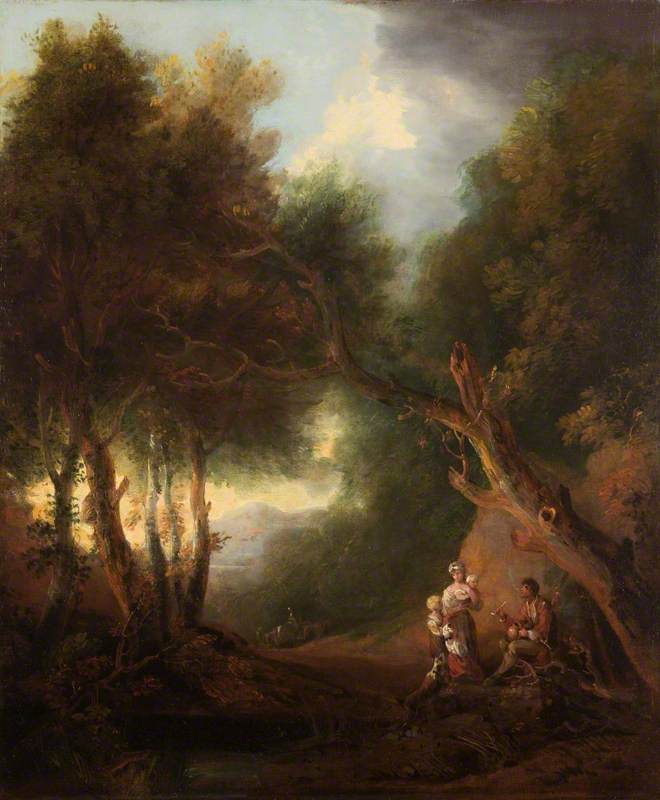
Despite these diversions, Barker's work became repetitive and its quality was, at best, variable. He was a stylistic chameleon, who lacked originality and used his vacuous talent to ape his contemporaries without employing their focus or sincerity. His inability to live within his means and the dwindling sale of his paintings resulted in him dying in debt.
Hugh Belsey, independent scholar, curator, writer, broadcaster and lecturer, and former curator of Gainsborough's House in Sudbury
Hugh is the author of the 2019 two-volume catalogue raisonné Thomas Gainsborough: The Portraits, Fancy Pictures and Copies after Old Masters, published by Yale University Press
